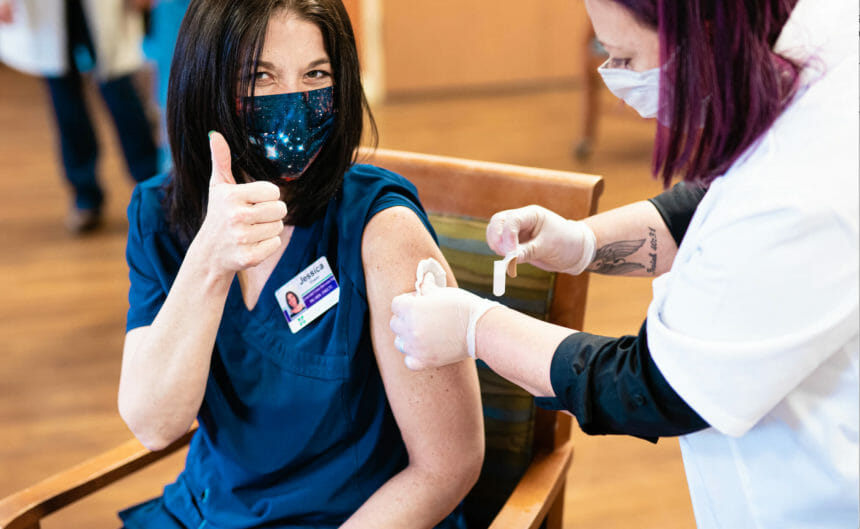Senior living operators looking to increase staff COVID-19 vaccine uptake should focus their efforts on the “movable middle” by making vaccination easy, building trust in vaccine safety and offering incentives for vaccination.
Those are the recommendations from a report from a task force of behavioral science experts aimed at understanding vaccine hesitancy among senior living and skilled nursing staff members and encouraging vaccine uptake.
The COVID-19 Vaccination Uptake Behavioral Science Task Force Final Report was born out of concern over low staff vaccination rates of 37.5% during the initial on-site vaccination clinics at assisted living communities and nursing homes through the Centers for Disease Control and Prevention’s Pharmacy Partnership for Long-Term Care Program.
During a LeadingAge membership call on Monday, task force co-chair Sigal Barsade, Ph.D., a professor in The Wharton School at the University of Pennsylvania, said that experts from organizational behavior, psychology, healthcare communication, and policy and marketing met to identify opportunities to improve vaccine uptake in staff members and provide an “opening to be thoughtful about how to change minds.”
“It is based on science but meant to be able to be something any person in the long-term care industry can pick up and look at for actual, practical suggestions, and a model, in terms of how to think about increasing our COVID vaccination uptake,” Barsade said of the report.
The task force divided long-term staff into three primary groups: vaccine acceptors or advocates; the movable middle, or those undecided and hesitant; and vaccine refusers or detractors.
The authors state that “vaccine hesitancy is an attitude, not a behavior,” and that information is not sufficient to change behavior. They also found that organizational culture and supervisor-employee relationships will influence vaccine uptake.
With that in mind, their preliminary recommendations include focusing interventions on the movable middle by removing barriers to vaccination, leveraging social influence and motivational framing, enlisting influential peers to build trust in vaccine safety, and offering incentives for vaccination.
For vaccine detractors, the recommended strategy is to minimize their negative effect by debunking misinformation and acknowledging freedom of choice.
“Overall, we recommend applying a cumulative, layered approach with different intervention options available to long-term care facilities from which to select, based upon their understanding of their needs and population and their culture and relationships,” the report reads. “We believe that this approach will enable the long-term care facilities then to customize, and thus optimize, their respective solutions.”
The task force conducted literature reviews, asked committee members for recommendations, and tracked results based on strategy applied. Barsade said the report is applicable to a broader population, including Medicaid beneficiaries, and to other settings as well.
On Tuesday, in another effort to encourage COVID-19 vaccination among staff members at assisted living communities and nursing homes, the American Health Care Association and National Center for Assisted Living announced the expansion of the #GetVaccinated campaign. Funded in part by a cooperative agreement with the CDC, the campaign now has a dedicated website.



